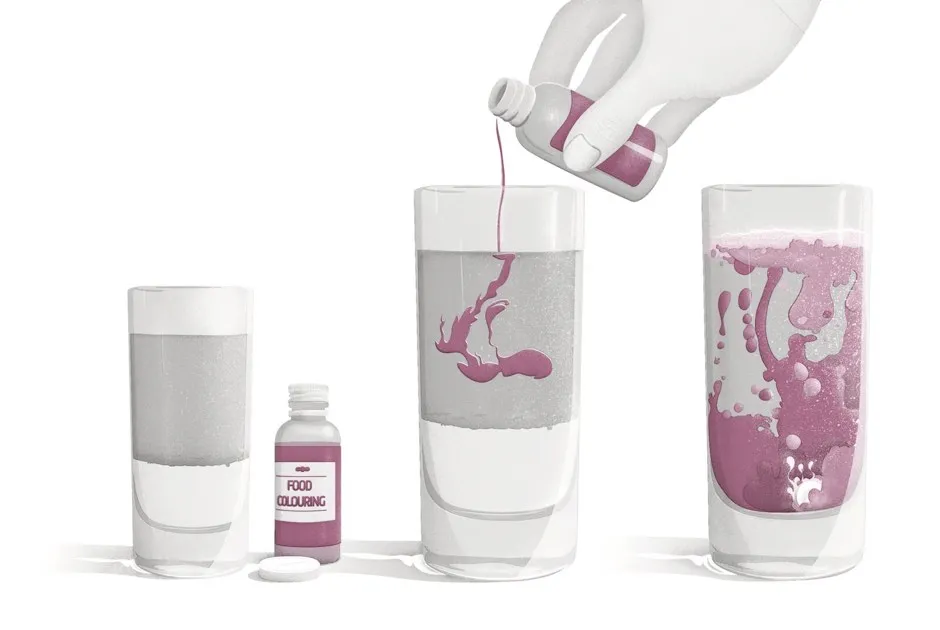What you'll need
- A tall, open container such as a plastic drinks bottle or a glass
- Cooking oil
- Water
- Food colouring
- Fizzy vitamin tablet or Alka-Seltzer
What to do
- Fill the container about a third of the way up with water.
- Pour cooking oil on top of the water until the container is nearly full.
- Wait for the oil and water to separate.
- Add a few drops of food colouring and wait for the water to become coloured.
- Break the tablet in half and drop it into the container.
- Watch the lava lamp do its thing!
- Add more pieces of the tablet to keep the reaction going.

What's the science?
The key to how the ‘lava lamp’ works is the fact that oil and water don’t mix.
Whether two liquids mix depends on the interactions between their molecules and also their freedom to move around – the stronger the attractive forces, and the greater the possibilities of movement, the more likely they are to mix.
Water molecules are ‘polar’ – one end is negatively charged, and the other is positively charged. This means that water molecules attract each other more strongly than they attract oil molecules, which are ‘non-polar’.
Also, the water molecules end up forming a kind of cage around the oil molecules, restricting the motion of both. This is an unfavourable state, and the water and oil molecules quickly separate. The oil floats on top of the water because it is less dense.
The tablets contain citric acid and sodium bicarbonate, which are released into the water when the tablet dissolves. When particles of these two chemicals come into contact with each other, they react, producing carbon dioxide gas. The gas forms bubbles in the water.
These are less dense than both the water and the oil, so float upwards, dragging along some of the coloured water.
The bubbles burst once they reach the top of the oil, and the water falls back down.
